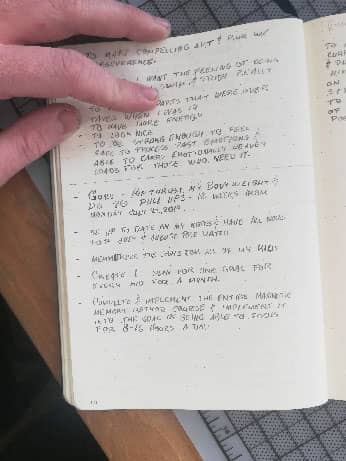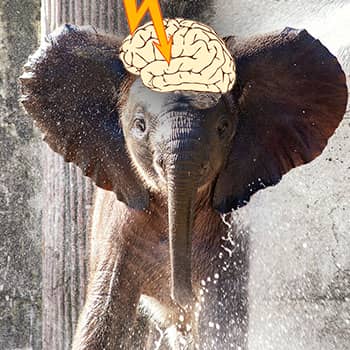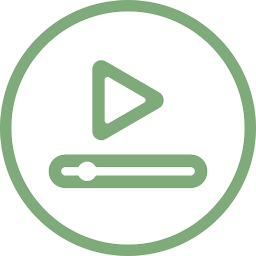Podcast: Download
Subscribe: Apple Podcasts | RSS

And you need to start practicing the neurobics exercises I’ll teach you on this page.
Why?
Well, for one thing, this special form of mental exercise makes your ability to focus and concentrate a lot sharper.
It will also improve your memory because of the benefits of how most neurobics strengthen your brains cognitive maps .
I’ll show you what they are and how this special form of brain fitness can help your mental life thrive.
I’ve broken the kinds of neurobics into 3 categories and will share 15 kinds of exercises you can try.
Make sure to bookmark this page and come back to it often each time you want more ideas for getting the benefits of this most powerful form of brain fitness.
Neurobics Defined:
Memory Boosting Routines That Pack Small And Play Big
Neurobics are mental activities and cognitive exercises that stimulate the brain, prevent memory loss, and improve memory recall.
Just as physical exercise stimulates the muscles, so the muscle of the brain is stimulated with neurobic exercise.
We all are familiar with the benefits of aerobic exercise to the heart and the lungs, but we often overlook the benefits of neurobics to strengthening of our neurons and neuronal networks. The association here is so simple, and yet so often ignored.
In sum, neurobics comprehensively stimulate different areas of the brain. The exercise leads to direct and noticeable boosts in brainpower, intelligence and learning ability. You should also see your attention, perception and even nervous system improving.
Why A Fit Brain Is The Best Way To Preserve Memory
Neurobics, when practiced consistently, have the power to prevent memory loss.
How?
Memory loss comes from atrophy of the brain. In the same way that bone density goes down and muscles shrink with no training, so the brain can become deteriorated with no stimulation. This is why neurobics are so important, not only for your memory goals now, but over the years to come too.
Neurobics can also potentially improve memory recall.
That means regular mental fitness is the best line of defense and the best compliment to a memory training system.
While neurobics will not improve your memory in the same way as a laser-targeted, focused memory improvement practice, the element of discipline neurobics can bring are a perfect companion to tools like Memory Palace training techniques.
From Better Mood To Laser Sharp Focus:
Brain Benefits On Tap
Besides the benefits to your brain and memory, incorporating neurobic exercise into your life can improve your mood, focus, memory, and mindset.
Do you want to be in a better mood?
We all do, don’t we?
I assume the answer is yes. No one wants to dredge through their day, dreading the next one to come when their head hits the pillow at night. That’s no way to live, if you can even call that living.
Brain stimulation through neurobics creates blood flow. Because feelings and physiology are inextricably linked this circulatory response that accompanies neurobic exercise can trigger feelings of joy.
Neurobic exercises are based on the idea of focus, making a conscious effort to perform tasks that have been, essentially, automated by our brains. With this “focus on focus” with simple activities we can, therefore, improve that focus.
The Link Between Neurobics and Memory Exercise
Neurobics also have the potential to improve your overall memory.
By performing the neurobic exercises you’ll find below, your memory will be strengthened. By simply making the conscious effort in, essentially, mundane tasks, your brain is engaged and primed for incorporating more formal memory training exercises. You’ll literally be encouraging it to undergo growth through neuroplasticity.
Finally, neurobics can help with one of the greatest struggles in modern-day society: negative self-talk.
We have all been guilty of weaponizing our own thoughts against ourselves.
But constantly beating yourself down robs you of precious energy.
Luckily, neurobics can help you escape from the negative framework that may have you trapped. A shift in focus, from belittling yourself for no good reason, to congratulating yourself for a job well done is possible, all with some unassuming, but powerful, exercises.
And let’s face it:
When you feel better, you have a better mindset. It’s just that simple.
The 3 Major Categories Of Effective Neurobic Exercise
Neurobics often include some kind of physical component, an environmental component, and auditory component. You will interact with the world, creating neuroplasticity in your mind, with these three major categories of neurobic exercise:
Category One: Physical Neurobic Exercise
Our brains are tailored towards efficiency, which is beneficial when we encounter a problem or new activity. We automatically problem solve, which is amazing, but these “same old, same old” routines do nothing for mental development.
1.Non-dominant hand exercises with writing
One of the most obvious examples of this shortcut in our brains is the concept of a dominant hand. Which hand do you unconsciously pick up a fork with? How about waving to a friend across a crowded room? The hand that you use for daily activities without even so much of a thought is considered to be your dominant hand.
In neurobics, the most beneficial physical neurobic exercise is non-dominant hand development.
Just switch up your daily activities and use your “opposite” hand. This will bring a mindfulness and pause so that you must actually stop and think about the activity you are engaged in.
Start small with brushing your teeth with the opposite hand. This is just a small, almost minuscule change that can bring a different sensation to an obligatory, automatic morning routine.
For more of a challenge try to write with your non-dominant hand. I discovered I was a bit ambidextrous in this sense. Working as a professor it would bring me joy to, instead of physically moving to a new spot on the blackboard, to simply switch hands.
Then there’s juggling while chanting and other fun brain games. Playing games in general are great for improving brain function and cognitive health.
You can incorporate writing with your non-dominant hand into your memory journal as well. Try to do your gratitude journaling and general personal development goal-setting with your non-dominant hand, or try writing from right to left, instead of left to right.
Don’t worry if your non-dominant hand writing is sloppy at first. With practice your penmanship will improve. Instead, focus on the goal of giving different parts of your brain different exercise.
This exercise promotes cognitive enrichment in another way. As you focus on the content of your journaling, your life will feel more meaningful. You’ll also generate better ideas that help you create more impact. And because you’re activating more of your brain, this makes your thoughts much more likely to be translated into action.
2. Non-dominant hand music exercises
If you are a musician, apply this form of cognitive enhancement to your playing.
If you are a bass player and tend to play the higher tones with your left hand, try switching hands. Or if you’ve never learned to tap, give that a try.
It’s also fun to try playing left-handed if you normally play right-handed. Be sure to put in 10 to 15 minutes of consistent, daily practice.
If you play piano, cross your body by playing the bass notes with your right hand and the higher notes with your left. This will not only improve your musical intelligence, but provides incredible brain training.
3. Playing card non-dominant exercises
If music’s not your bag, perhaps cardistry or legerdemain. I practice both myself:
Everyone loves a good card trick that leaves the crowd wondering “Now how did he do that?”
To this end, I’ve trained myself to do magic tricks with my non-dominant hand and shuffles with my non-dominant hand. In standard practice think of mirrored tricks that take both hands to operate equally. You can build your skillset for dual handed tricks by using your non-dominant hand.
4. Neurobic exercises with your mouth
As the authors of Keep Your Brain Alive have noted, you can include your tongue in neurobic exercise. As they point out, “the tongue and lips are among the most sensitive parts of the body, even more sensitive than the fingertips.” That’s why the benefits to using these muscles in neurobics is paramount.
Also, you can use your non-dominant hand to use your fork and knife and later to brush your teeth.
Singing or whistling are great neurobic exercises, especially as you continually learn new tunes.
Speaking a new language will help give your mouth a tremendous workout. Languages like Mandarin use mouth parts that native English speakers rarely use, for example. Practicing pronunciation will not only improve your lifestyle, but is also helpful in stimulating brain function.
5. Ear Pinch Squats
Finally, try ear pinch squats. I know it sounds wild, but you are incorporating movement and function in several muscle groups, and we know this has palpable benefits.
Think back to the idea of cross training. Try crossing your arms, pinching your ears, then go into a squat. You can build this practice by upping your squat reps, or holding the squat longer, like a chair pose in yoga.
Category Two: Environmental Neurobic Exercise
Move beyond your personal motor skills and take your practice to the world around you.
6. Eyes closed navigation exercise
Take a familiar, unobstructed area, and walk through it to a destination of your own choosing with your eyes closed. If you are in an apartment, step off the elevator, or out of the stairwell and walk down the hallway with your eyes closed.
7. The key exercise
You can increase the challenge with the eyes closed key exercise.
Everything, from getting out of the elevator, walking to your front door, getting out your keys, identifying the key that’s needed, putting the key into the keyhole, turning the key to unlock the door, opening the door, stepping inside, and closing the door, can, with, practice, be done with your eyes closed.
You’ll find your spatial recognition and your other senses will be in a heightened sense of awareness, all by removing sight from the equation.
8. Eyes closed showering
When you’re in the shower you are creating a diffuse in mental environment, really, without realizing it. This is why a lot of creative ideas come in the shower, due to your mind wandering.
Maximize your focus and concentration by letting this natural mind wandering occur while showering at the best possible time of day, mornings. You can even try cold showering, breathing, chanting, and Wim Hof techniques in tandem with eyes closed showering for an even greater boost!
9. Eyes closed eating
Another exercise that is easy to incorporate multiple times a day is eyes closed eating. You will experience a different tactile sensation, experience, and different sounds.
Food may even taste different, better. We often do not focus on the act of eating itself as we are distracted by our environment.
There are even restaurants that cater to the idea of eating in the dark. Most major cities offer a “dining in the dark” experience, and it’s well worth giving it a try.
With eyes closed eating you can appreciate what’s on your plate much more. This exercise helps you consciously separate the environment from your nourishment. It also lets you mentally explore and separate outside noise from chewing and the sensations of eating.
You can also tun in on your body and multiple environmental sensations , such as other diners walking past in a restaurant. This will place you more in the moment, helping you increase your appreciation for the act of eating.
Take the neurobics of eating one step further with multi sensory dining. For example, as you eat, really focus on:
- Kinesthetic experiences (the physical feeling of food in your mouth, the muscles of your lips and tongue working together, the movement and sensations of your teeth)
- Auditory experiences (the sounds of eating and drinking for both yourself and others around you)
- Visual experiences (what foods look like – or what the darkness looks like with lights off)
- Emotional experiences (really burrow into how your dining experience makes you feel)
- Conceptual experiences (what can you think about as you eat, ranging from the origins of the food culturally to ideas you have about diet)
- Olfactory experiences (the smells you detect as you eat, perhaps made more interesting as you use your focused attention to think about the smells of other foods, such as imagining the smell of cinnamon while you’re eating a lemon)
- Gustatory experience (obviously, you will experience taste, but how deep into it can you go?)
- Spatial experiences (how wide/thick is the foot you’re eating? How dense?)
Finally, eating foods that are new to you can provide tons of excitement that lights up your brain. You can practice eating with your eyes closed too.
In fact, you can turn this into a game with your friends and family. Have everyone place a dish under a cover and then challenge each other to identify the food my smell and taste alone.
10. Take different routes
Finally, try changing your micro routes.
With minor changes en route to your destination you make your journey an experience. You will find, if you take notice, that you walk down the street the exact same way daily. What about just circling a mailbox for no other reason than to change the micro route?
Circle a street sign, clockwise one time and counterclockwise the next. Engage in your travel by injecting a bit of play into your routine. If you rely on public transit and are looking to expand this idea of course change, leave the house earlier and take a different route, or on Google Maps select the “avoid highways” option in traveling to your destination.
As a side note, I’ve wondered if human memory evolved most substantially after people stopped wandering the earth as nomads. For example, it is said that nomadic tribes often came across stone graves and attributed them to gods, having completely forgotten that it was their own family members they had buried a year or more ago before traveling on.
But as societies have settled and spent longer periods of time in homes and neighborhoods, it has become unthinkable that one would forget a lost family member. This strength of recall certainly comes from the deepening and strength repetition of fixed, domestic living has on our brains. But it also suggests that by breaking our routine, we get the benefit of both worlds – the primal flexibility of dealing with unexpected patterns and the certainty created by deep grooves in our brains through repetition.
Food for thought as you go on your walks!
Category Three: Auditory Neurobic Exercise
11. Tracking individual instruments
Instrument tracking incorporates the sense of hearing, or active listening, into neurobics. Try listening to a song, only listening to one particular instrument throughout. Isolate one instrument and follow it through the song, or throughout a favorite album. The next play through follow the rhythm guitar if you were tuned into the bass, or the lead guitar if you were listening for the drums.
12. Reading exercises
Try reading either ultra-slow or ultra-fast out loud. You are incorporating the physical sensation of moving your mouth and tongue, exercising those muscles, but, at the same time, exercises your focus of hearing as you articulate the words audibly. You can even study auctioneers and their techniques for ultra-fast speech as auditory neurobics.
Above all, read Memory Palace books that encourage you to commit information to memory and then practice reciting it. You may even wish to learn how to memorize a speech so you can practice reciting from memory in front of a crowd.
13. Covering the beat
Try setting a metronome to a certain beats per minute and try to “cover” the click with clapping or snapping. Practice with setting the clicks farther apart, then closer, varying the speed as you build your rhythmic skills. This is beneficial not only to musicians, but anyone who wants to improve their auditory and motor focus.
This brain exercise can be hard to imagine, so please check out this video for a demonstration:
14. Breath counting
Finally, count breaths out loud.
This exercise requires no equipment, no outside stimulus, and can be done anywhere. T
ry either breathing, counting, one, breath, two, another breath, three, or audibly counting “one, two, three” as you are breathing.
Focused breathing, concentrating solely on your own breath, can transform not only these small, conscious moments, but your overall life, reducing anxiety, pain, and even muscle tension relief. Make the unconscious a conscious act.
Your Next Steps
Start small with just one of the neurobic exercises and commit to putting it into action. Set a realistic goal for practice, whatever that looks like for you. Maybe “I’m gonna do this neurobic exercise every day for a week,” if that is an attainable, yet challenging goal for you. Whatever it is, commit, with intention.
Then, simply, execute to completion. If you say you will do the exercise for a week, for seven days actually do it.
Then pick another exercise and repeat. Try for a loftier goal, a longer time period of daily practice, or a shorter time period with multiple daily exercises. You know what is a challenge for you and what is right for your life. Find the benefits in changing up your routine and relish them. You’ll find this is the best motivation for continued practice.
To help those serious about ongoing mental fitness, I created the Brain Exercise Bootcamp. It includes 40 special brain exercises designed to do just that: help you continuously enjoy the benefits of regular mental fitness.
Consistency is important because these exercises changing your brain structure.
That’s what action does. You can’t see the world in a particular way if you’re not taking action. Your perspective can’t change. You can’t shine light into the darkness if you’re not moving.
And, for better or worse, you’ve got to keep moving.
Of course, I know uncertainty about what’s gonna happen can be horrible. But if you do a reality check, and just let go of the need to know what will happen, then you’re going to have much, much better results in life.
This is an important fact because you can’t know anyway. Even if someone could say “This is exactly what’s gonna happen. This is exactly when it’s gonna happen. This is exactly how it’s gonna happen,” it’s not true until it happens to you. And because you cannot know and will not know, what you need to do is you need to just take action anyway, no matter what happens.
Start small and be ready to grow. Just as athletes expands their litheness with cross training, you can take small steps and conscious effort to expand your focus, concentration, and improve your memory, and life. It takes just seconds to take that next step. For inspiration, check out how neuroscientist, memory athlete and memory expert Boris Konrad takes care of his mental stamina. He is inspiring!










Thanks, Anthony! Yes, it is boring to always do things the same way. We need to change the way we are doing things to improve our brains.
Agreed, Maricela. Boredom is the great brain killer. We need variety even with the smallest things to bring our neurons to life.
Fascinating, I can’t wait to learn more. Thank you so much!
More coming soon. I’m working on a whole series as we speak.